Unique people’s lives brought about by Geo
In the area of the San'in Kaigan Geopark, various local industries have been brought about by utilizing the diverse and undulating terrains.
Fishing industry
The Sea of Japan was formed by separation of the Japanese Archipelago from the Eurasia continent and the Sea of Japan Proper Water of low temperature fills the Sea of Japan staying still being covered by the flowing Tsushima Warm Current on the surface. As the results, the fishing industry in the San’in Kaigan Geopark is blessed by both of warm and cold seawater fish and shellfish.
The Sea of Japan Proper Water is middle to deep water deeper than 200m depth and is habitat for fishes of cold water such as snow crab, red snow crab, black small shrimp, red flounder, sandfish, firefly squid, porous-head eelpout. On the other hand, the Tsushima Warm Current flows on the surface of the Sea of Japan, and bluefin tuna and yellowtail migrate, and warm-sea creatures such as Japanese flying squids and flying fish can be seen.
There are many leading fishing ports in the San'in Kaigan Geopark, and many of these seafood from the Sea of Japan is landed. Snow crab (Depending on fishing port they are called as Matsuba, Shibayama, Tsuiyama, Taiza gani), Red snow crab (Kasumi gani), Black small shrimp (Mosaebi), Flounder, White sandfish, and Swardtip squid. They are local specialties of each of fishing port. Picking up wild seaweed, also, is conducted on the wave-cut platform.
Aglicurture
For rice cultivation of the area, you can find "rice terraces" made using the areas of landslide and coastal terraces. For example, villages of Sodeshi, Wasabu, and Nukita are well known showing beautiful landscapes of rice terraces. For sand dunes, mostly because Tottori University has been conducting researches on the agricultural use of sand dunes for a long time, high-quality special products are produced in various places. In the Tottori Sand Dunes, a vast Chinese shallot field has been cultivated by the development of advanced erosion control of sand and irrigation (sprinklers), making it one of the leading production areas in Japan. In the Tango Sand Dunes, fruit cultivation (watermelon, melon, etc.) is flourishing, taking advantage of sandy areas where water and fertilizer can be easily controlled.
In livestock farming, Tajima cattle, Japanese black cattle, is famous. In the steep terrain surrounded by the mountains in the inland area of Tajima, cattle could not be bred between villages of different valley, and a good pedigree has been protected. Currently, this system for protecting the Tajima cattle pedigree is certified as a Japanese agricultural heritage.
Sightseeing and recreation
Many hot springs (Onsen) are found being scattered along the faults in the San'in Kaigan Geopark, making it one of the leading tourist destinations. Kitsu Onsen (Kyoto Prefecture), Kinosaki Onsen , Yumura Onsen (Hyogo Prefecture), Iwai Onsen (Tottori Prefecture), etc. are famous hot springs with a history of more than 1,000 years and have been loved by literary people for a long time.
The Hachibuse area, consisting of geological formations of the Hokutan Group and the Teragi Group, is the area of frequent occurrences of the landslide. The area of gentle topography formed by landslide is used for skiing in winter and paragliding in summer so that visitor can enjoy visiting there all year round. A nice ski slope is also found in Mt. Kannabe, the newest volcano in the region. In Aoyacho, Tottori Prefecture, many water falls can be seen running water from the plateau of andesite and the tradition of Japanese paper making utilizing its abundant water source has been passed down from ancient times. There is a facility called "Inshu Washi no Sato" where Japanese paper is produced and you can experience making paper by yourself.
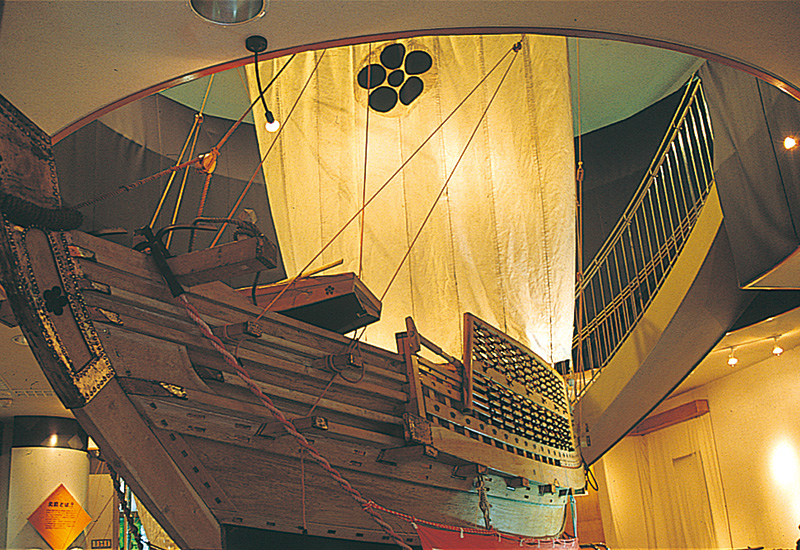 Kitamaebune Ship
Kitamaebune Ship
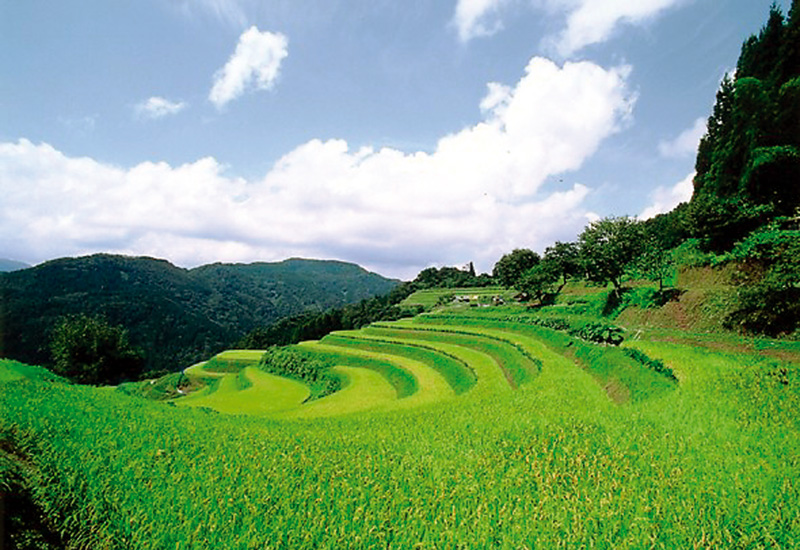 Rice terraces
Rice terraces
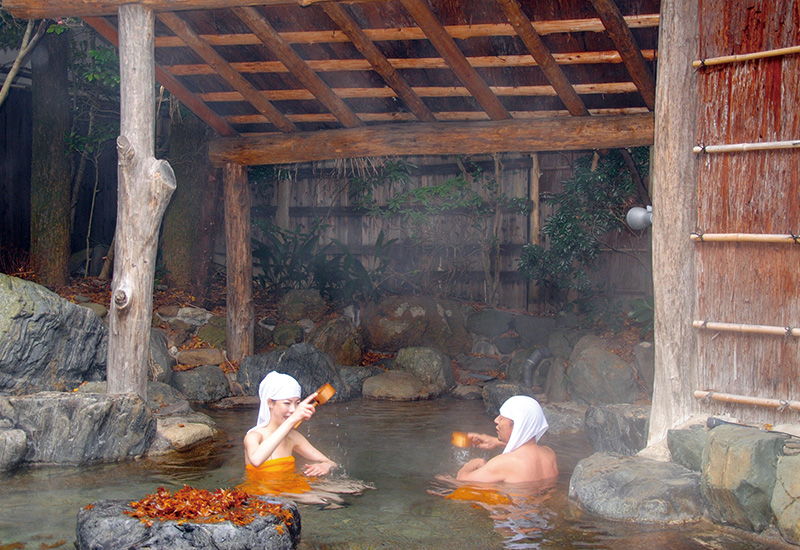 Hot spring
Hot spring
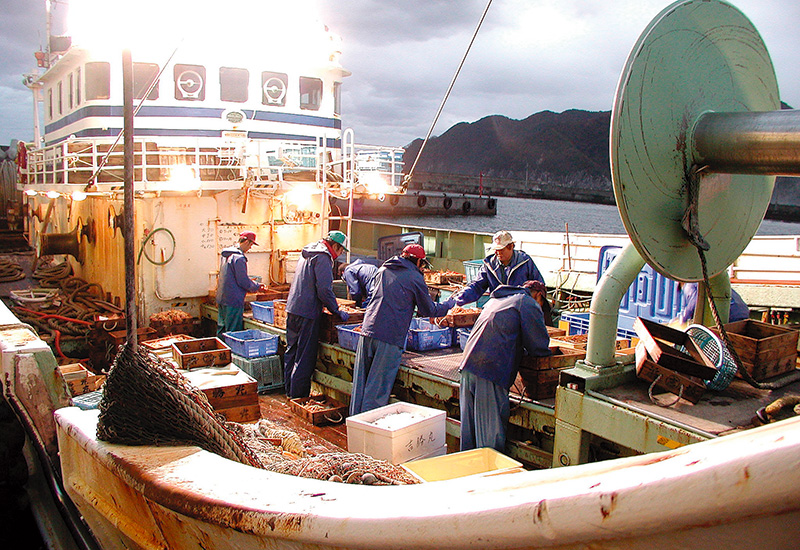 Fishing industry
Fishing industry
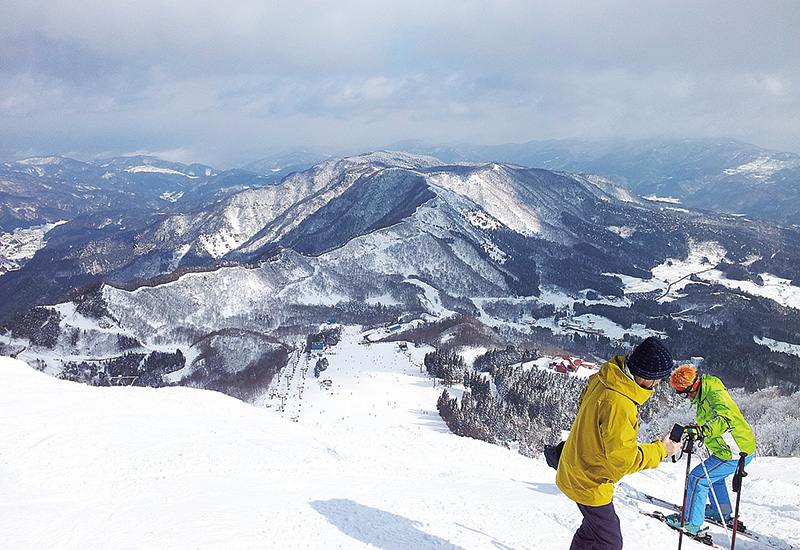 Ski slope
Ski slope
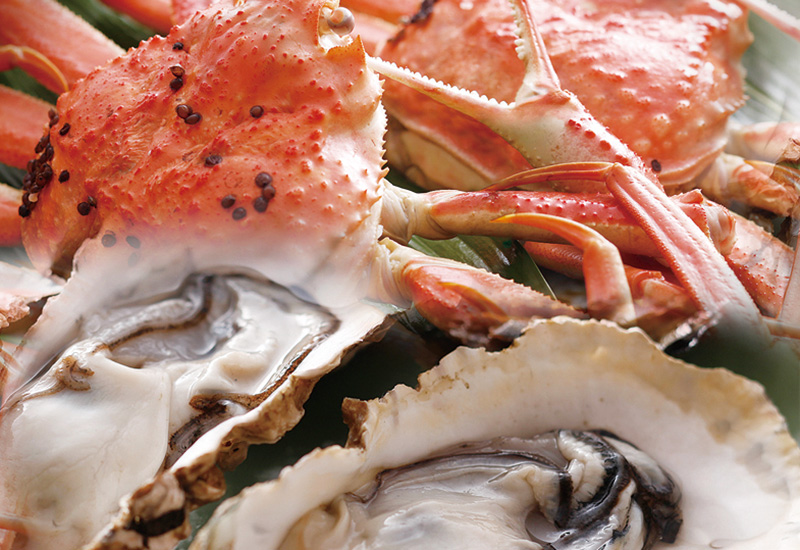 Gourmet
Gourmet
